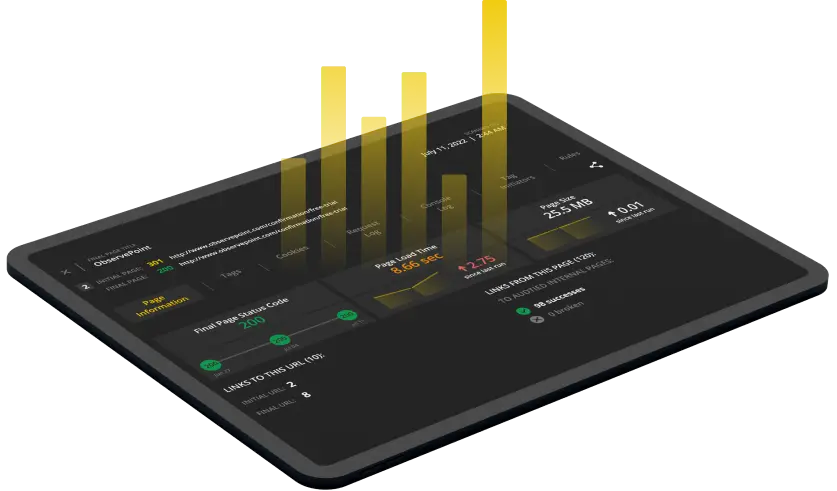About Us
Why we do
what we do.
Websites are complex. They are essential to the image and growth of your company, and to the privacy and trust of your customers. But websites have so many dynamic parts and pages that it’s nearly impossible to keep up with all of them all the time. Until now. ObservePoint’s Web Governance platform brings insights, automation, and compliance to the complexity of your digital customer experience. Our solution automates the scanning of your website; from the highest traffic pages and user paths to the dark corners of your company’s web presence. We give you the ability to see what’s performing below acceptable standards, trace it back to the source, and quickly see a path to improvement. Ensure privacy compliance standards, validate landing pages, confirm data tracking, clearly see your entire marketing tech stack, validate your ecommerce engines, and much more. ObservePoint presents the reality of what’s happening on your website and gives you a clear map to make it even better.
Our Mission

Our Accolades

Top 100 Fastest Growing Companies in Utah
2022

Utah Business Fast 50
2022

Fastest Growing Companies
2022

Top 100 Fastest Growing Companies in Utah
2021

Inc. 5000 Fastest Growing Companies in America
2021

Fastest Growing Companies
2021

Utah Business Fast 50
2021

Utah Business Fast 50
2020

Top 100 Fastest Growing Companies in Utah
2020

Inc. 5000 Fastest Growing Companies in America
2020

Technology Fast 500 North America
2019

Top 100 Fastest Growing Companies in Utah
2019

Utah Business Fast 50
2019

Inc. 5000 Fastest Growing Companies in America
2019

Technology Fast 500 North America
2018

Top 50 Fastest Growing Companies in Utah
2018

Best New Technology Finalist
2018

Top 50 Fastest Growing Companies in Utah
2016

American Exchange Partner of the Year
2016

Most Influential Vendor Finalist
2016

Top 50 Fastest Growing Companies in Utah
2015

Technology of the Year Finalist
2013
